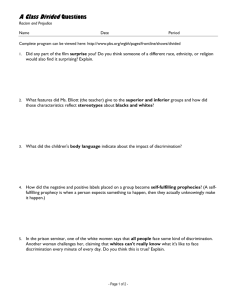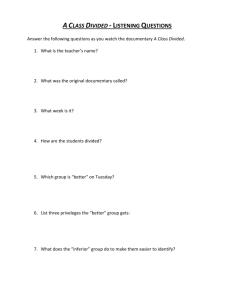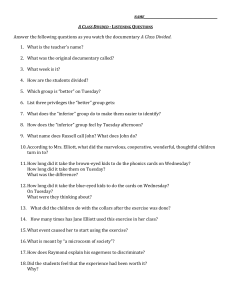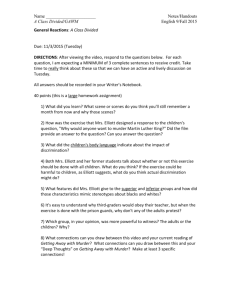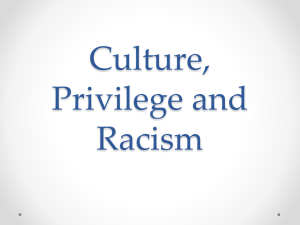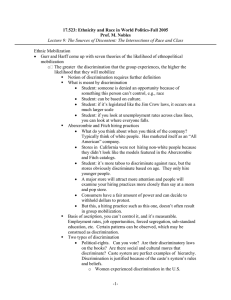A Class Divided: Discrimination Writing Response
advertisement
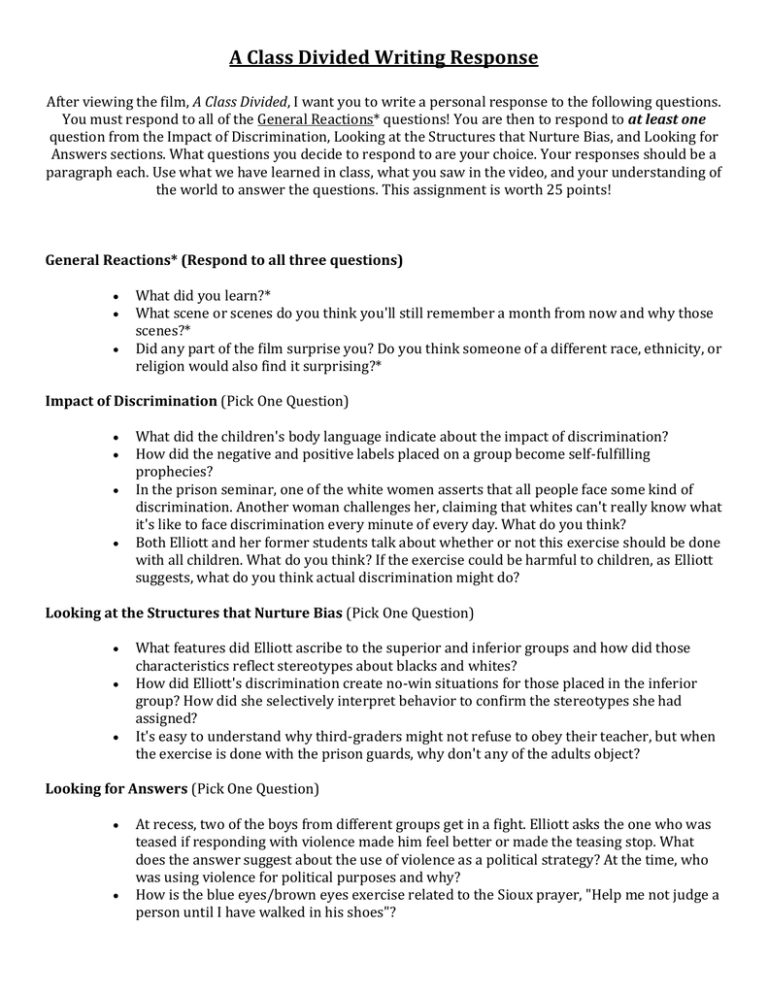
A Class Divided Writing Response After viewing the film, A Class Divided, I want you to write a personal response to the following questions. You must respond to all of the General Reactions* questions! You are then to respond to at least one question from the Impact of Discrimination, Looking at the Structures that Nurture Bias, and Looking for Answers sections. What questions you decide to respond to are your choice. Your responses should be a paragraph each. Use what we have learned in class, what you saw in the video, and your understanding of the world to answer the questions. This assignment is worth 25 points! General Reactions* (Respond to all three questions) What did you learn?* What scene or scenes do you think you'll still remember a month from now and why those scenes?* Did any part of the film surprise you? Do you think someone of a different race, ethnicity, or religion would also find it surprising?* Impact of Discrimination (Pick One Question) What did the children's body language indicate about the impact of discrimination? How did the negative and positive labels placed on a group become self-fulfilling prophecies? In the prison seminar, one of the white women asserts that all people face some kind of discrimination. Another woman challenges her, claiming that whites can't really know what it's like to face discrimination every minute of every day. What do you think? Both Elliott and her former students talk about whether or not this exercise should be done with all children. What do you think? If the exercise could be harmful to children, as Elliott suggests, what do you think actual discrimination might do? Looking at the Structures that Nurture Bias (Pick One Question) What features did Elliott ascribe to the superior and inferior groups and how did those characteristics reflect stereotypes about blacks and whites? How did Elliott's discrimination create no-win situations for those placed in the inferior group? How did she selectively interpret behavior to confirm the stereotypes she had assigned? It's easy to understand why third-graders might not refuse to obey their teacher, but when the exercise is done with the prison guards, why don't any of the adults object? Looking for Answers (Pick One Question) At recess, two of the boys from different groups get in a fight. Elliott asks the one who was teased if responding with violence made him feel better or made the teasing stop. What does the answer suggest about the use of violence as a political strategy? At the time, who was using violence for political purposes and why? How is the blue eyes/brown eyes exercise related to the Sioux prayer, "Help me not judge a person until I have walked in his shoes"?

